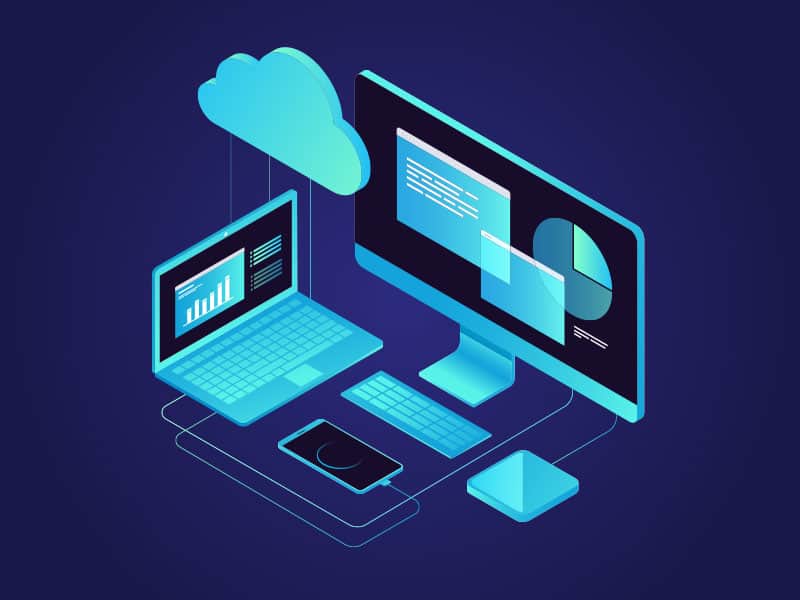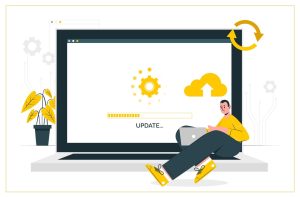Are You Tired Of Spending Your IT Budget On Old Desktops?

Most businesses spend a huge segment of their income on managing and maintaining desktops that work effectively for some years and then deteriorate consistently. Not to forget the constant struggle of setting up, installing, configuring, reinstalling, and recovering these desktop devices.
Desktop as a Service (DaaS) is an infrastructure offering desktop virtualization to receive the latest resources via the cloud. The DaaS provider handles the maintenance and upgrades requirements, and your business can experience cost-effective, secure, and mobile services.
This post will explore 7 figures and facts about DaaS that help businesses grow and thrive.
7 Facts To Know About Desktop as a Service
Cloud desktop service is a state-of-the-art technology empowering businesses to work remotely without setting up an internal structure. To leverage this technology to the fullest, check 7 facts about Desktop as a Service.
1. One size doesn’t fit all
The basic function of DaaS is to provide cloud desktop service via the Internet. This basic function remains the same for every organization, but the implementation is different, and it should be different.
Every business has different requirements, such as varied employees, freelancers, resource requirements, and applications. Therefore, it is evident that an organization with fewer business-critical applications requires fewer resources than an organization with more applications.
What are the significant considerations for understanding your needs of DaaS?
- How much storage do you need?
- What should be the configuration of your cloud desktops?
- How many cloud desktops do you require?
- What is your uptime requirement?
- What is the security structure offered by the DaaS provider?
You can modify your DaaS implementation and customize it according to your business requirements based on these questions.
2. VDI vs. DaaS
Virtual Desktop Infrastructure (VDI) is a process allowing businesses to virtualize desktop resources for many decades now. Many organizations set up on-premise infrastructure to centralize desktop management and offer virtual access to the cloud desktops within the office or a range.
Desktop as a Service is the modern VDI technology that hosts VDI on the cloud. So, as a business, you get mobility, scalability, and security, but the core of DaaS is still VDI. Therefore, we are simply merging two great technological solutions to receive optimum benefits for business growth and productivity.
Depending on the requirements of your business and ease of managing both infrastructures, you can select what seems best for your organization. For instance, small and medium businesses can benefit from DaaS to avoid the expense and hassle of setting up DaaS.
3. DaaS mobile management
The BYOD policy and mobility have been the driver of DaaS. Hence, it seems natural to think about how Desktop as a Service offers mobility while maintaining security, scalability, and integrity.
- Multi-device access to manage business assets, applications, security standards, sensitive data, and compliance.
- Tracking and securing applications on several thin clients.
- Sharing content securely and seamlessly to collaborate remotely over an internet connection or virtual network.
4. Graphic intensive use
Many professionals like architects, engineers, designers, and other media professionals, require high computing power and maximum storage to access graphic-intensive applications seamlessly. Offering these apps in-house can become a hassle over time with increasing storage and processing requirements.
Cloud desktop service is a solution that can offer resource-intensive applications over the Internet without churning away your budget and efficiency. This solution helps you to scale and descale cloud desktops without causing any money overheads. You can simply optimize resource utilization for different types of users and optimize your costs.
For example, for season upgrades, scale for a month or two and descale later to reduce pricing. Another example would be creating separate thin clients for the designing team and other non-critical teams.
5. Computer repurposing
It is believed that the DaaS infrastructure may not benefit small and medium organizations because of initial hardware requirements. However, that is not the case because cloud desktop service allows using old PCs for longer. Since your PCs are converted to thin clients (or virtual desktops), you may be able to extract resources and performance from these endpoints easily. Therefore, the life of your existing systems improve, and your cost of repurposing these computers decrease.
You just need to discuss your requirements with the right DaaS provider and transform your desktops to managed thin clients. These thin clients help you reap the following benefits:
- Simple setup and management
- Data privacy and security
- Backup and disaster recovery
- Cost-effective management
- Scalable execution
- Advanced collaboration
6. Quick provisioning
Earlier, virtualization somehow meant provisioning each system manually. However, those days are over, and now we have more straightforward methods to provision your virtual desktops without exhausting your IT team.
DaaS is a managed service offered by your DaaS provider, so they set up your desktops and create virtual copies very quickly. From your end, your initial capital expenses, as well as provisioning, are minimal. You just need to ensure that your current desktops work just fine or have a BYOD policy to cover your endpoint requirements. Your provider manages the rest.
7. Accelerated growth till 2026
The cloud desktop service market is expected to reach $ 11 billion in the next five years. This means we may observe a series of opportunities in the coming years. One of these opportunities is future-proof working.
The COVID-19 pandemic caught us off-guard, but no other disruption can touch us if we have DaaS. It takes our business online, helps it function 24/7, improves scalability, and manages security. If this is not your contingency plan, then what is?
Conclusion
Virtual Desktop Infrastructure has been around for a while, and so is DaaS. Only after the pandemic, we saw almost a 100% increase in DaaS and VDI adoption.
Businesses now require work from home or mobility solutions. DaaS perfectly fits into the category. It helps reduce IT costs, improves resource management, enhances security, and offers higher operational efficiency.
Bhavleen Kaur is a content writer at Ace Cloud Hosting- a leading cloud VDI Solution provider. She specializes in writing about VDI, DaaS, cloud technology,cloud-based desktop & likes to know about upcoming technology and trends. In her free time, you can find her reading novels or watching movies.





